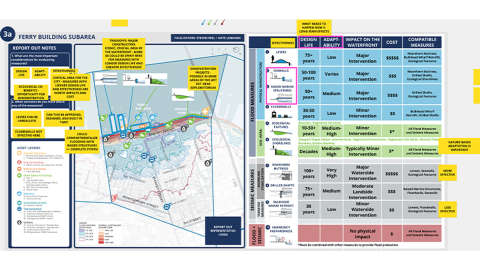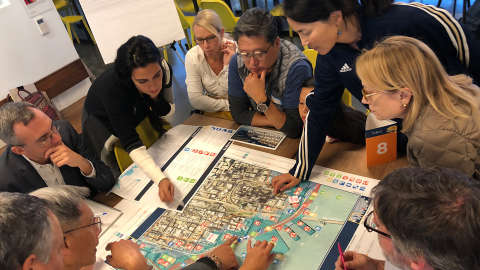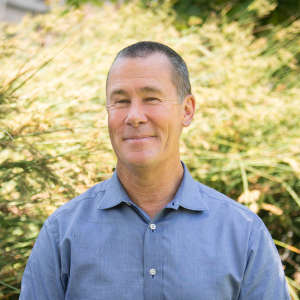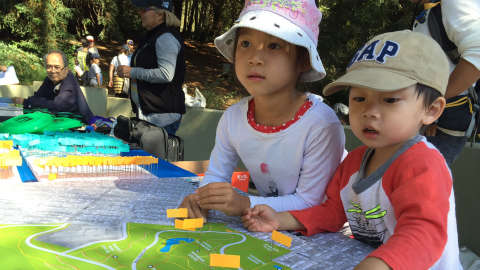

This way of working with stakeholders allows us to get around a table and have deep and collaborative conversations about what is important to people. It is our opportunity to learn about how they see and imagine their communities getting better. In long range planning efforts, this model also provides the opportunity to engage stakeholders in the complex process of trade-offs, negotiations, and compromise that public land managers undergo through long duration projects with often indeterminate outcomes. By taking the community through the process itself, rather than just communicating its outcomes, we have found that consensus building is more easily achieved through an understanding of the decision-making process and direct engagement with their fellow community members.
This approach has been especially powerful in our work with the Port of San Francisco and the CH2M/Arcadis Planning and Engineering Consultant team on the . This long-range resilience project is setting the foundation for the long-term sustainability and transformation of the century old waterfront of San Francisco. This program will bring about a robust set of shoreline improvements to mitigate the effects of earthquakes and flooding due to sea level rise of the coming decades. Over the last two years we have sought to keep the public informed and engaged with a planning process that is abstract, multi-layered, and iterative. Working with the programs communications and stakeholder lead Civic Edge Consulting and our collaborators at SiteLab Urban Studio and TEF Architects we accomplished this through a series of community meetings that presented the ongoing work of the program and engaged community members in exercises that linked abstract concepts such as the selection of evaluation criteria for future design alternatives to the decision-making process that will shape the future of the waterfront for future generations.
Of course this year we, along with everybody else, were thrown into a “work from home” world in which we have been paradoxically distanced from our communities and simultaneously brought closer to our neighbors. We have also discovered that in this unprecedented time public spaces have become more critical and necessary than ever. As such, the planning and design efforts for more and better public spaces have not stopped, if anything, they are more urgent than ever. CMG, and the rest of the planning and design field, has been faced with the challenge of creating meaningful engagement with communities that we can no longer meet face to face with and gather around a table.
San Francisco Waterfront Resilience Program
To overcome this challenge, the team working with the Port of San Francisco leveraged our experiences with digital tools to develop an interactive engagement process with community members. Becoming experts of the many communication platforms such as Zoom and Microsoft Teams and combining those with collaboration tools like Conceptboard and Miro allowed us to continue engaging with communities while simultaneously educating the public and gather in depth, targeted, and specific feedback to inform the program as it entered a critical phase in its development.


Lessons Learned
We hope that some of the lessons we learned through developing these engagements will help others in the planning, design, and land management industry who are still working to find the best practices for these new times and conditions:
- Trust the good faith of the participants and your team to deal with challenges.
- It is easy to worry about technical issues and disruptive participants like “zoombombers” when planning for a virtual community meeting. To get through your presentation without any disruptions or issues, it is tempting to use a webinar format for community presentations. We have found that this type of communication and meeting type eliminates the opportunity for robust feedback from the public, reduces enthusiasm from the audience, and worse, their trust in the engagement process. In the virtual world, we have the tools and features to prevent and/or quickly fix these challenges and still have meaningful engagement with the public.
- Be prepared by practicing.
- It is even more critical to do a full run-through of a virtual meeting and include all speakers, facilitators, and note-takers. In the run-through, check to make sure your team has sufficient internet connectivity, audio (specifically a microphone through a laptop, computer, headphones, etc.) and a video camera. Transitions between parts of the meeting need clear cues and a tight agenda (or tick-tock that notes the times and changes in a presentation or meeting).
- Engage in pairs.
- For small group engagement pair a facilitator and note-taker together. The facilitator leads and participates in the conversations with the participants, while the note-taker interfaces with the interactive part of the exercise (ConceptBoard or Miro) to record and reflect feedback from the community.
- Staff appropriately, but not overwhelmingly.
- It is important to make sure you have enough facilitators on hand to keep small group discussions small, and just as important to not have too many staff present. The goal is to have community members speak with facilitators but also with other community members. The impact of having too many staff in relationship to public participants is especially heightened by the format of video conferencing where every participant (facilitator, community member, or stakeholder) is given equal space on the screen. In virtual meetings, you cannot simply step back from the table and listen!
- Keep it light and have fun.
- These times are challenging for everyone. Making the work of our lives fun and uncomplicated makes it easier and more productive.









